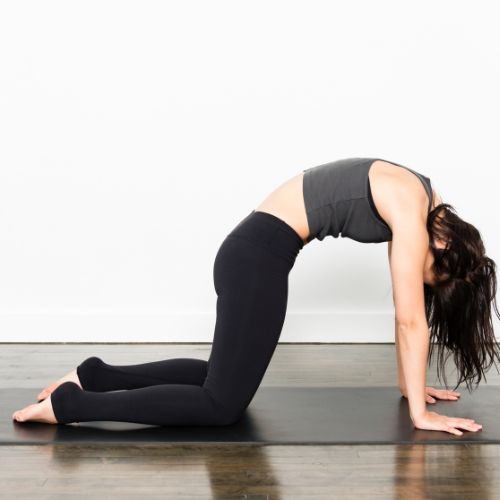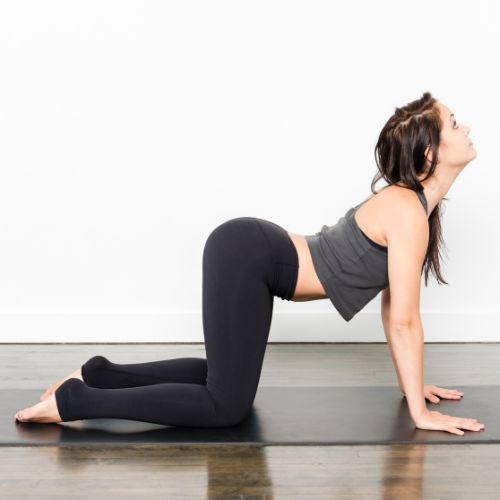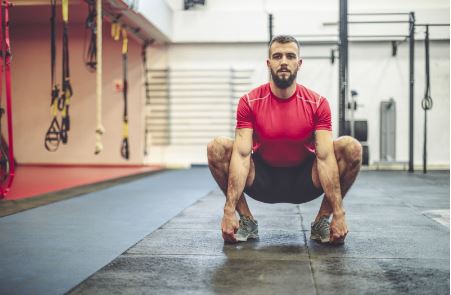Physiotherapist, Rostam Torki, shares four easy, effective stretches that can be added to your stretching routine. Check them out here or make an appoitment with Rostam at Athlete's Care Aurora for exercises and treatment that can help you!
As an active person myself, I still find myself sitting at the desk or on the couch for long periods of time during the day. You probably feel the same way. And let’s be honest here, the pandemic has only made matters worse. All this sedentary time has definitely caused some tightness throughout my body, especially in my neck, hips, and lower back. You’re probably feeling the same way.
This is why why I’ve started doing a very quick stretching routine each day to relieve the tight and sore muscles around my neck, hips, and lower back. Since I started this routine about 2 weeks ago, I’ve already started feeling less tight and sore when I wake up and throughout the day. I’ve also been sleeping better! The best part is, this stretching routine takes less than 10mins to do each day?
Cat/Cow
The first stretch on thi list is one of the most well-known stretches and it is also one of the easiest stretches to do. This stretch has many benefits for your spine. You’re most likely sitting at the desk in a slouched posture to do work or lying down on the sofa while watching TV for long periods of time. This is far from ideal, as our spines are meant to move in all different directions all the time! By doing this stretch, you can relieve the stiffness in your entire back by opening up your spine along with activating your core muscles which help support your spine.


How to do the cat-cow stretch:
-
Get on all fours with your hands under your shoulders and knees under your hips.
-
Curve the middle of your back towards the ground, as you bring your head and tailbone towards the ceiling. As you do this, keep the movement slow and controlled and take a slow and deep breath in. Hold this position for 1-2 seconds.
-
Slowly reverse this movement, by bringing your mid back towards the ceiling and tucking your chin and tailbone down into your body. Again, do this slowly but this time exhale all the way air out. Hold this position 1-2 seconds.
Research by the famous Dr. Stuart McGill who has devoted his life to back pain suggests that repeating this movement for about 7-8 controlled cycles just once a day gives the most bang for your buck for a healthy spine.
Kneeling Wall Rotations
If you recall, I mentioned that your spine is meant to be moving in all different directions. Well, this stretch works on moving your spine in a direction different from the cat-cow you just performed. As the name suggests, this stretch works on the rotation of spinal movement. This stretch has several advantages:
-
Relieves the stiffness in your spine through rotation
-
Stretches out your chest and shoulders which often become tight due to prolonged computer or cellhpone use
-
Stretches the hip flexors which become tight from prolonged sitting (and can cause low-back pain!)

How to do the kneeling wall rotation stretch:
-
Kneel down with the knee that is on the ground as close to the wall as possible and your other leg straight out in front of you
-
Bring both arms out straight in front of you with the back of your hand touching the wall
-
With the arm away from the wall, rotate your entire upper body to try and touch the back of your hand to the wall behind you - it’s okay if you can’t!
-
As you do this, be sure to keep your hips stable and stop them from rotating
-
Rotate back so your palms are touching each other again in front of you
You can repeat this stretch for 8-10 repetitions before switching to the other side. You can make this stretch easier by placing your outside foot further away from the wall.
Deep Squats
Even if you go on frequent walks or to the gym, you likely rarely use the full range of motion of your hips, knees, or ankles. This can result in those joints becoming stiff and the muscles becoming weak. That is why doing deep squats can target all the joints from your hips down. This exercise helps relieve the tightness in your glutes, hamstrings, quads, and calf muscles. Most importantly, this exercise is very simple to perform!

How to do deep squats:
-
Lower yourself to the ground in a squatting motion until your bum is almost touching the ground - you’ll probably feel the stretch already!
-
When you are in the deep squatting position, make sure your feet point forward and your chest is nice and high
-
From this position, try rocking side to side, alternating the amount of weight you put on each foot (this helps train your balance and core strength too!)
-
Now, place your elbows on the inside of your thighs/knees and slowly push them apart - you should feel a deep stretch on the inside of your hips
If this stretch is too difficult, you can roll up a towel or yoga mat to place under your heels as you go into the deep squat. Over time, you’ll notice that you can make the roll smaller and smaller. Progress is awesome!
Wall Angels
Now that you’ve stretched out your whole spine, your entire leg, and your shoulders, you can put all the extra wiggle room you have to work! Wall angels are a great way to loosen up the tiny muscles in your back that help support your spine and shoulders. In fact, they’re often used in shoulder rehab. Given the amount of time we spend on our computers and phones these days, these muscles are bound to become both weak and tight.
Just as you worked on your core with the cat-cow stretch, this stretch helps work on the “core” that stabilizes your neck and shoulders. After all, proper control of your shoulder blade means less shoulder pain and injury. This exercise is essentially a stretch, coordination, and strengthening exercise all in one! Who doesn’t love getting the biggest bang for their buck? You can watch the video below to help you with this stretch.

How to do wall angels:
-
Stand with your back on the wall in a wall squat position
-
Tuck in your belly button and round your back so that there is no space between your lower back and the wall
-
Tuck in your chin to make the space between your neck and the wall smaller
-
Hold your hands in a “W” shape by your side with your elbows and wrists touching the wall - if this is too difficult, just keep them as close to the wall as you can!
-
As you brace your core, slowly raise your arms up to make a big “V” against the wall before slowly lowering back into the “W” position
-
Remember to keep your back and neck tucked into the wall throughout the entire exercise
To make this stretch easier, you can move your feet farther away from the wall and work on bringing them closer over time. You can make it even easier by simply lying on the floor to do this exercise before progressing to standing.
Stretching Works!
Stretching is used by most physiotherapists, chiropractors, and many other professionals to help relieve and rebalance muscles that become tight due to the demands of our lives. Stiffness, aches, and pains are something you and I both deal with every day because of the tendency to spend a lot of time on the phone and computer.
These stretches can be an amazing way to break up screen time throughout the day. You can also do these stretches to start your day with more fluidity and energy, or to relax yourself before bed to get a good night’s rest.
Stretching is NOT the end of the line
The stretches you learned about today are great for everyone to do, as they address the common issues we all face. However, it is important to remember that your specific needs warrant a customized treatment plan to address your personal goals. Stretching is a great starting point, but some form of strengthening is typically needed to address more complex problems.
Your physiotherapist can help you determine if there are any other specific stretches you should be doing. They can also help you with a customized treatment plan with both manual techniques as well as an exercise plan to get you back to doing what you love!
FAQ:
How long should I hold a stretch for?
Static stretches (stretches that you hold in one position and count) provide the most benefits if held a minimum of 30 seconds. Dynamic stretches (stretches that you move through a range, like the ones in this post) provide the most benefits if done for at least 7-8 repetitions (which typically ends up being about 30-40 seconds similar to the static stretches!)
What muscles should I be stretching?
Determining the muscle that needs stretching can be tricky. Usually, you feel tightness or stiffness in the muscle, and this indicates that stretching can help. However, some muscles can be quite difficult to stretch out. Additionally, there are times when muscles are tight, but the ideal treatment for the tightness may not be stretching, but rather strengthening the muscle. This is why it’s important you contact your physiotherapist to determine the most optimal treatment plan for your needs.
















